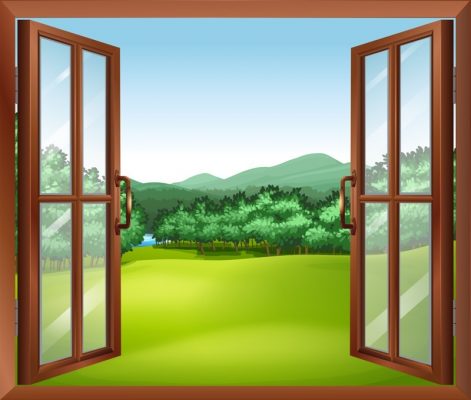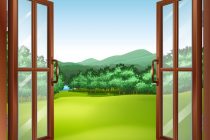The air we breathe today is often polluted by an extensive range of particulate and gaseous toxins generated by furnaces, power plants, factories, automobiles and myriad other sources. Although the Clean Air Act of 1970 helped reduce air pollution, there are still many “non-attainment” areas where current criteria and standards for air pollutants (i.e. carbon monoxide, sulfur dioxide, nitrogen dioxide, and particulate) are not met.
You can download this fact sheet by clicking here.
Particularly in major urban areas, industrial centers and traffic hot spots, “dirty air” is not just a nuisance, but also poses a health risk, including a broad range of respiratory diseases, lowered immune response, higher incidence of infectious diseases, lower life expectancy, and psychological disorders. Furthermore, susceptible individuals may develop symptoms at much lower exposure levels of air pollutants.
The quality of outdoor air has a profound impact on indoor air. Without appropriate controls, indoor air is often far more polluted than outdoor air. Conditions for both outdoor and indoor air must be properly assessed to provide the healthiest ventilation and air-conditioning solutions.
In enclosed spaces, human breathing causes an increase in carbon dioxide levels, and a decrease in oxygen levels. At rest, humans breathe about 500 milliliters (ml) of air per breath. Exhaled air contains about 16% oxygen and 4% carbon dioxide, in contrast to the inhaled air which has 21% oxygen and 0.03% carbon dioxide. Sensitive brain cells are the first to be affected by a lack of oxygen and an excess of carbon dioxide. In the presence of high CO2 levels circulating in the body, the brain’s normal activity and performance can be hampered.
(Find out the adverse effects of high CO2 levels on the brain and the body here: Effect of Chemicals on Growth & Development in Organisms.)
A fundamental law in biology says that humans thrive in oxygen-rich environments and perish in carbon dioxide-rich environments.
Other types of air pollutants such as carbon monoxide, sulfur dioxide, nitrogen dioxide, aldehyde, hydro- carbon and dust also cause ill health, intolerable discomfort, as well as a lack of performance. Fossil fuel combustion, polluted outdoor air and smoking are some of the major pollutant sources.
The minimum air exchange rate of a given room should be chosen so that, at the lowest indoor surface temperatures to be expected, the indoor air humidity is also low enough to prevent condensation from occurring on any surface. If the climatic condition does not allow for ventilation to reduce humidity sufficiently, air dehumidification must be used.
In indoor spaces, the number of harmful microorganisms (bacteria, fungi, viruses) increases with the number of occupants, and decreases with the frequency of the air exchange rate. With an appropriate ventilation strategy, sufficient sunlight exposure and the selection of natural anti-microbial building materials and finishes, the indoor germ count can be substantially reduced.
A supply of fresh air should be ensured for the following reasons:
- To provide sufficient oxygen (outdoor air: 21%oxygen)
- To avoid increased levels of carbon dioxide and other airpollutants
- To regulate indoor air humidity (except as noted in a hot, humidclimate)
- To avoid odorpollution
- To reduce levels ofmicroorganisms
- To supply negatively charged airions
Issues to consider with whole-building ventilation that will be dependent on the home construction and climate:
- How much outside air do youneed?
- How do you distribute it throughout thehouse?
- How do you cleanit?
- Do you add moisture or subtract moisture?
- Do you add heat or subtractheat?
In the past, natural air infiltration was a major contributing factor to the air exchanges in a house. However, the more tightly modern houses are sealed for energy efficiency, the more a proper ventilation strategy becomes important. The less often windows are opened, and the tighter a house is sealed, the more mechanical ventilation becomes necessary.
In order to minimize the heat loss associated with ventilation, controlled ventilation systems with heat recovery are now promoted and subsidized. However, if they are not properly sized, installed and maintained, they can actually pose a health risk.
We differentiate between the following types of natural ventilation:
- Natural AirInfiltration
- StackVentilation
- Manual WindowVentilation
- Automatic WindowVentilation
- MechanicalVentilation
Air conditioning is a type of controlled ventilation whereby the circulating air is chilled to the dew point to remove humidity from the air. Though not recommended for a Bau-biologist home, most homes today have a mechanical, often forced air, Heating, Ventilation, and Air Conditioning (HVAC) system. Unfortunately, these systems can often be the source, or at least contribute to indoor environmental problems.
Want to learn more on this issue? Click the comprehensive online course, here below.
Further reading:
Effect of Chemicals on Growth & Development in Organisms


